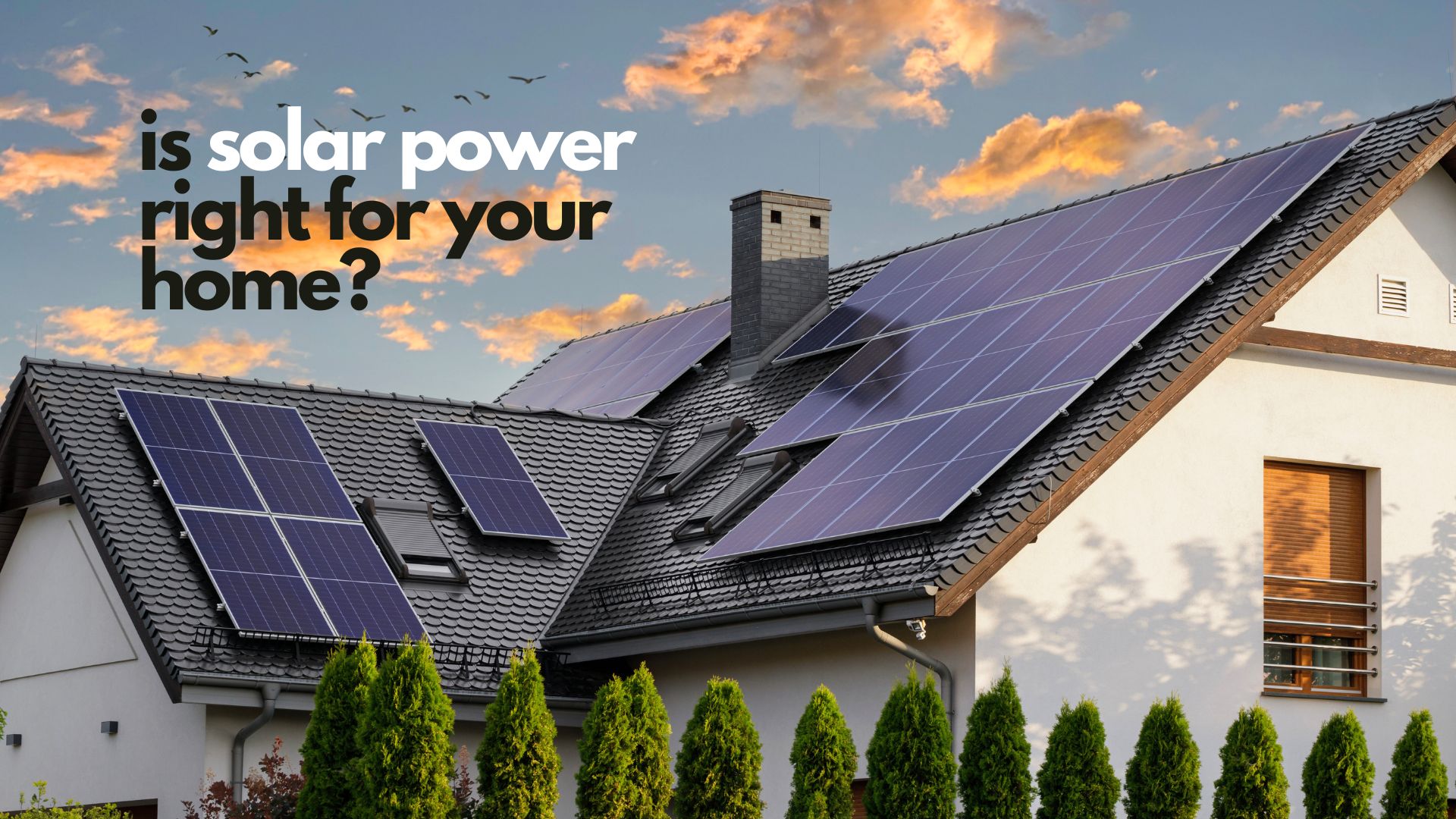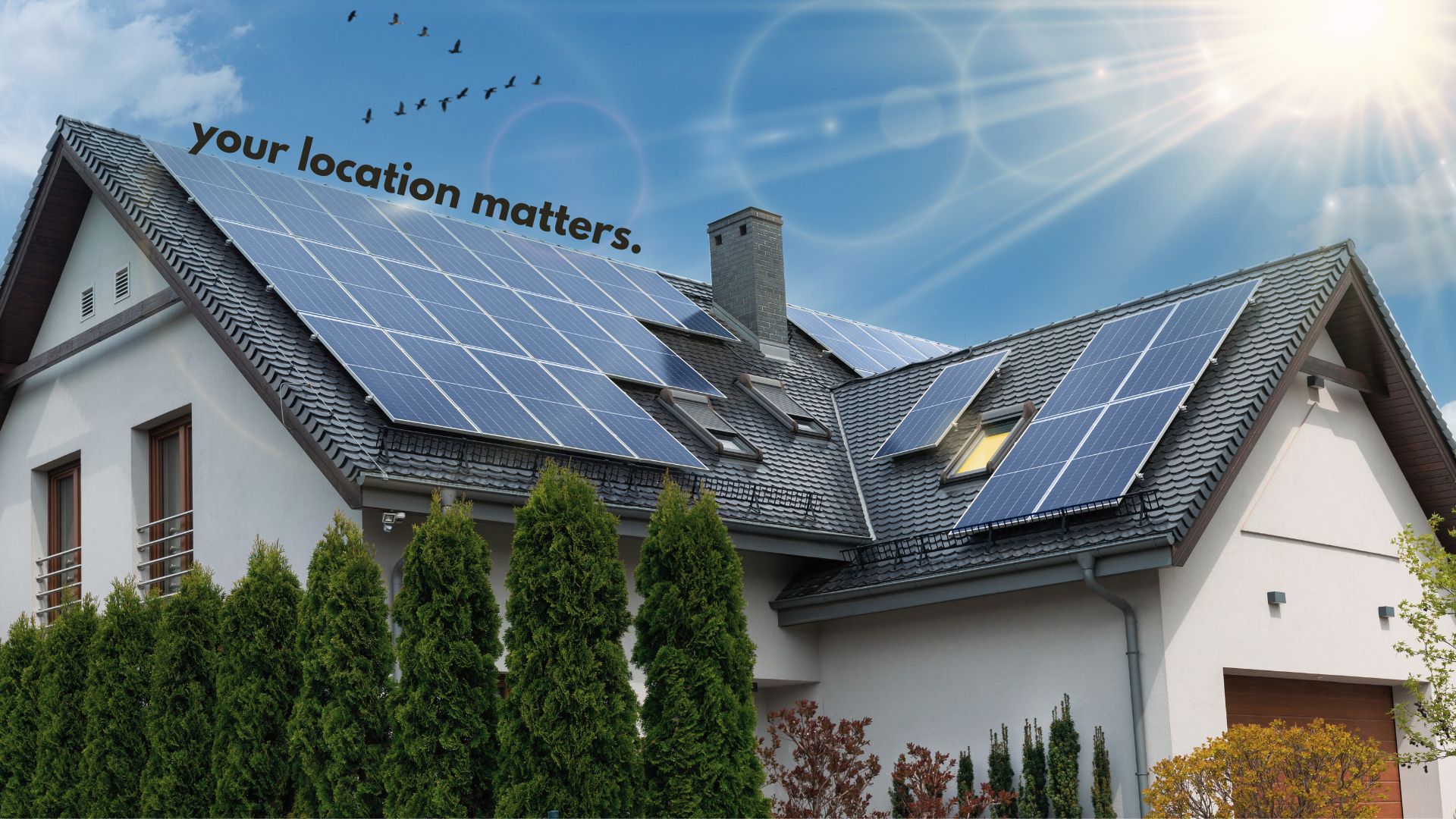Solar panels are rising in popularity. So long as the sun keeps shining, they produce reliable energy during the daytime, even when it rains, making them an eco-friendly way to power your home. Meanwhile, the cost of the panels is dropping, and many countries and states have incentives like tax breaks. But is installing solar power worth the hassle?
Solar power for your home is feasible and practical for many. It lowers your electric bills, improves home value, and you can "sell back" energy to the grid in some places. However, performing a feasible study before investing in solar power is wise.
Keeping the lights on is becoming increasingly challenging, thanks to volatile weather or poor investment in infrastructure. Slap on rising energy costs due to inflation and global conflict, and solar energy becomes incredibly attractive. But if the investment is suitable for your home, it depends on your needs and where you live, as these factors heavily impact installation costs.
Is Solar Power Feasible and Practical for Your Home?

The sun is free to enjoy, but installing solar power is not. How much it costs to install solar depends on various factors, including how many panels your home requires, if you want battery backup, and if your area offers any incentives, tax breaks/credits, or buybacks. It's a complex calculation that can be challenging to do on your own.
In addition, it isn't easy to assess your home's suitability for solar power unless you are in the industry. Inviting a professional to do a solar feasibility study will provide you with accurate data on whether this green energy will work for your home and estimates of installation costs and likely timeline for recouping your investment.
Can Solar Power Meet Your Energy Needs?
Household energy use varies depending on size, number of people living in the home, cooling and heating needs, and appliances. The higher your energy usage, the greater the number of panels your home will require.
How much energy (wattage) a solar panel can produce depends on its size and make. Some solar panels are more efficient than others, so while they may cost more per panel, you may require fewer of them. Typical estimates are 20-25 per home, but some people need as little as 15 and others as much as 35. Depending on the type of solar panel, estimates vary per watt from $0.90 to $1.50.
In addition, it's essential to consider how much power you require at peak usage and if you are willing to compromise. For instance, if you want to run the dishwasher, washing machine, oven, and hairdryer simultaneously, you'll need far more solar panels than a household that uses these appliances one at a time.
Do You Want to Use Your Solar Energy After Dark?
A battery backup stores excess energy produced by solar panels during the day so you can use your own power at night rather than relying on the local utility. It is an attractive option for those living off-grid, in areas with frequent blackouts, or those who must keep essential medical equipment operational even during volatile weather.
However, the cost of backup battery storage significantly increases the overall installation bill. It also means users will not have the advantage of earning buyback.
The exact price of the batteries depends on how much power and usage you require when the sun is not shining. There are some very basic systems for only a couple hundred dollars, and others cost well over ten thousand. Thus, adding battery storage is often not an attractive option for those living in areas that provide reliable electricity and don't want to live off the grid.
Is Your Roof Suitable for Solar Panels?
The style of your roof, pitch, orientation, and surrounding trees and buildings play a huge part in determining if solar power is feasible for your home. In addition, your roof has to be strong enough to safely support the extra weight of the panels.
Ideally, a roof should be a style with a 30-40-degree pitch. There are ways to correct for a flatter roof, but they might add cost. Conversely, there may be options for roofs with pitches steeper than 40 degrees, but an assessment would have to be done first and then provide the pros and cons of any potential options.
The roofing material will also impact installation cost and longevity. Ideally, a shingled or metal roof is best. Tiled roofing creates challenges that could impact the installation price and may require more maintenance to ensure the panels remain in place.
Roof positioning is recommended to be south-facing for the Northern Hemisphere and north-facing for the Southern Hemisphere. However, this is more flexible than people assume, and many roofs that do not face due south/north can still produce respectable amounts of energy. But you will need about 18 square feet of usable roof space to place the panels.
Another crucial determinator is shade. If your home has many surrounding trees or buildings casting a shadow over the property for long periods, it may reduce your sunlight hours too much.
Weight isn't typically an issue for roofs at the ideal angle, as the panels only weigh 3-4 pounds per square foot. However, flat roofs require extra equipment, such as weighted ballasts, and not all are built to hold the additional pounds, although many can. Again, a professional assessor can advise if your flat roof is a suitable candidate.
How Many Sunlight Hours Does Your Location Receive?

How many sunlight hours you receive throughout the year impacts the effectiveness of solar panels. The closer to the poles you live, the less likely you'll get much power in winter. Thus, a person in Texas will recoup the cost of the solar power investment faster than someone living in Montana.
In addition, a person trying to live off-grid in Montana might need a backup power source to get through the darkest winter days.
However, being closer to the equator doesn't necessarily mean you'll recoup your solar power investment cost faster than those in the north. Other factors include the cost of grid power and state incentives. Consequently, a person in New Mexico will take an average of 2.5 years longer to recoup their investment in solar panels than someone in New Hampshire.
Does Your Area Have Qualified Solar Panel Installers?
The installation price heavily depends on whether your area has plenty of qualified solar panel installers. Generally, the more there are in your area, the more competitive the pricing. Those living in remote locations or places without local installers will have significant travel costs added to their bill.
To reduce this cost, you can self-install the panels. However, the final electrical hookup of the installation must be done by a licensed professional. In addition, self-installation may violate the warranties of your panels and/or roof and insurance agreements. Thus, it's essential to research your policies before trying to do it yourself.
Do You Have Solar Power Incentives, Tax Breaks, and Buybacks?
Many countries and US states have solar power incentives, tax breaks, and buyback policies to make solar power more attractive.
In the United States, the federal government's incentives typically come in the form of tax credits. Individual states often have additional incentives, some of which depend on where in the state you live. These incentives and tax breaks make solar power a more affordable option and allow users to recoup their investments faster.
Buyback, where you sell unused solar power to your local grid, depends on your solar setup and the utility company in your area. It's an excellent way to recoup your investment. However, while many utility companies make buyback straightforward and advantageous, some won't do it or make the process incredibly complicated.
To find out if buyback is an option for your property, contact your local utility company or consult a professional solar assessor.
Final Thoughts
Solar power is feasible and practical for many homes, but not all. The best way to discover if solar energy is right for you is to have a professional feasibility study. They can advise on the pros and cons of your options, which incentives and buybacks are available in your area, and provide realistic timelines for recouping your investment. (Related article: Maximizing Solar Energy: Is Your Home Suitable for Solar?)

